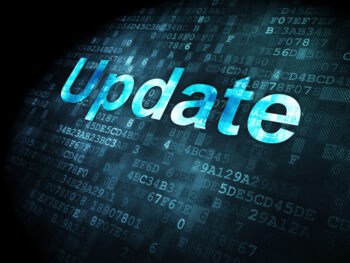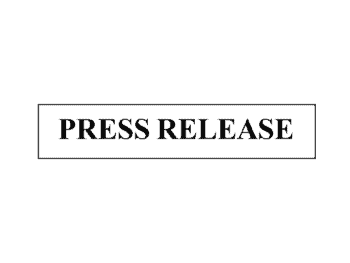
Section 111 Penalties
There remains uncertain where the Centers for Medicare and Medicaid Services (CMS) will go in terms of proposed rulemaking related to civil money penalties for Non-Group Health Plans (NGHP) who fail to report claims properly. This is an issue that has been ongoing for years. The coming year could very well be the time CMS formally adopted rules regarding what constitutes “good faith” efforts in Section 111 reporting and issue penalties for non-compliance.
Click Link to Access Free PDF Download
“8 ‘Think Outside the Box’ Tactics to Settle Workers’ Comp Claims”
One of the main focuses of the proposed rule deals with three possible options. The proposals included the following:
- Instances where the Required Reporting Entity (RRE) fails to report any NGHP beneficiary record within the required timeframe – one year after Total Payment Obligation to Claimant.
- Situations where the RREs response to CMS recovery efforts contradicts the RREs Section 111 reporting. An applicable penalty would be based on the number of days the entity has failed to report updates to the beneficiary record as required. Possible penalties for the RRE could include:
- Up to $1,000 per day (as adjusted) per day for non-compliance; and
- A maximum penalty not to exceed $365,000.
- This would occur when the RRE has reported, and the report exceeds any error tolerance specified by the CMS established parameters in any four out of eight consecutive reporting periods.
Section 111 reporting requirements have been an important issue for many reasons since its passage in late 2007. Stay tuned for updates.
PAID Action and Medicare Advantage Plans
A significant challenge of conditional payment resolution has been parties locating conditional payments made by Medicare Advantage Plans. Under the current process, the Coordination of Benefits (COB) Contractor will only provide a requesting party with conditional payment information related to Medicare Parts A and B (government-run/original Medicare). Although the Contractor knows the claimant is receiving Medicare under a Part C and/or D plan, they must not provide this information. This has led to countless frustrations when parties are conducting a good faith investigation into conditional payments. They are left to rely on the claimant – being fully transparent or aware of providing their Medicare coverage.
Effective December 11, 2021, the Contractor will be processed inquires differently and provide the requestor the following information:
- Whether a claimant subject to the query is, or during the preceding 3-year period has been, entitled to benefits under the program under this title on any basis; and
- The plan name and address of any Medicare Advantage plan under part C and any prescription drug plan under part D in which the claimant is enrolled or enrolled during such a period.
It is unclear how the Contactor will respond to these requests.
WCMSA Review and Approval Process
Interested stakeholders should continue to monitor changes to the Workers’ Compensation Medicare Set-aside (WCMSA) review and approval process.
These changes are outlined in the WCMSA Reference Guide. In versions 3.1 and 3.2 of the Guide released last year, CMS released an updated CMS Consent to Release form. This form requires the injured party to affirm they agree with the voluntary WCMSA submission process and the amount being proposed for the Medicare Set-aside. While this has not caused many problems, interested stakeholders have sought to seek the cooperation of the employee and their attorneys regarding the Medicare Set-aside process.
CMS also made an exciting pronouncement regarding the administration of Medicare Set-asides when the allocation includes “dangerous drugs.” These drugs are generally Schedule II controlled substances, which include opioid-based medications. There is some concern CMS may take steps in the future to “require” professional administration in these instances.
Conclusions
Medicare Secondary Payer continues to cause members of the claim management team headaches. It is essential to monitor various statutes, regulations, and policy changes in 2021. By doing so, parties can be proactive in these matters and continue to resolve cases without problems or excessive complications.
 Author Michael Stack, CEO Amaxx LLC. He is an expert in workers’ compensation cost containment systems and helps employers reduce their workers’ comp costs by 20% to 50%. He works as a consultant to large and mid-market clients, is a co-author of Your Ultimate Guide To Mastering Workers Comp Costs, a comprehensive step-by-step manual of cost containment strategies based on hands-on field experience, and is the founder & lead trainer of Amaxx Workers’ Comp Training Center, which offers the Certified Master of Workers’ Compensation national designation.
Author Michael Stack, CEO Amaxx LLC. He is an expert in workers’ compensation cost containment systems and helps employers reduce their workers’ comp costs by 20% to 50%. He works as a consultant to large and mid-market clients, is a co-author of Your Ultimate Guide To Mastering Workers Comp Costs, a comprehensive step-by-step manual of cost containment strategies based on hands-on field experience, and is the founder & lead trainer of Amaxx Workers’ Comp Training Center, which offers the Certified Master of Workers’ Compensation national designation.
Contact: mstack@reduceyourworkerscomp.com.
Workers’ Comp Roundup Blog: https://blog.reduceyourworkerscomp.com/
©2021 Amaxx LLC. All rights reserved under International Copyright Law.
Do not use this information without independent verification. All state laws vary. You should consult with your insurance broker, attorney, or qualified professional.














